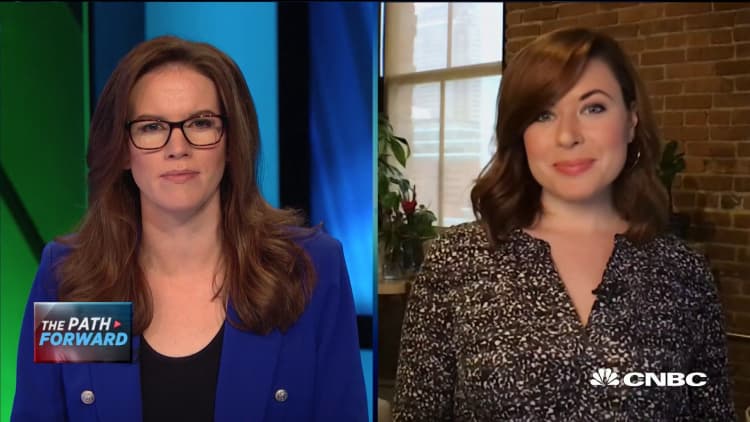In 14 days, the Small Business Administration processed 14 years' worth of loans, in the first round of funding for the Paycheck Protection Program. The second round has been an entirely different story.
After a rush to replenish the program with $310 billion in additional funding, the second funding round began April 27. More than a month into round two, there's more than $120 billion still left unallocated for small businesses.
Compare that to the first round, where in less than two weeks, during an unprecedented economic crisis, over a million loans accounted for some $350 billion in funding.
As of May 30, 4.4 million loans have been made in both rounds of the PPP program for a total loan value of $510.2 billion.
The amount is lower than had been last reported by the agency a week earlier. The SBA said the totals reflect cancellations including duplicative loans, loans not closed for any reason and loans that had been paid off.
The SBA declined to comment on demand for the program.
Since the average loan amount has fallen in value from the first round of funding, to $114,000, some say the capital is reaching truly small businesses. But the question remains — why has funding demand dampened in round two, when many small businesses are still hurting?
A few things are at play on Main Street, according to Richard Hunt, president and CEO of the Consumer Bankers' Association. He cited potential audits for businesses who take on the loans, enhanced unemployment that may make it difficult for businesses to lure workers back to the job and duplicative applications, which canceled one another out, as factors.
Some businesses are also likely concerned about adhering to the law as written in order to have the loan forgiven.
Small business borrowers need to spend 75% of the loan on payroll and the remaining 25% on other expenses such as rent and utilities, and use the loan within eight weeks of disbursement, among other rules, in order to avoid repayment, which means they may be reluctant to apply.

"The fear factor is real," Hunt said. "The 75/25 formula, maybe that was too high, and the rules are too complex."
The CBA is calling on Congress to forgive loans of less than $150,000 in part to encourage small businesses to borrow and begin using the money. It added that such a move would save more than $7 billion and tens of millions of hours of paperwork. A letter advocating for this change says in part, "This threshold would account for 85 percent of total PPP recipients, but less than 26 percent of PPP loan dollars. Lenders would continue to meet the PPP requirements provided by SBA for these loans, but the loan forgiveness process would be faster for these small businesses."
Hunt said that while borrowers have received the loan and may be waiting to use it, it's unlikely that other potential changes from Congress to the 75/25 formula and the time period in which to use the loan will encourage more borrowing in round two.
"If I were a small business owner, and I knew my livelihood was at stake, I would have applied by now," he said. "I don't see a massive rush into the banks because some of the rules change."
Recent National Federation of Independent Business survey data of its membership show that most small businesses interested in the loan have already applied for it. Those not applying may not be able to use the loan easily or simply may not realize they are eligible for the program, according to the findings.
Applications and demand in round one were also pacing differently, said Kevin Kuhlman, the NFIB's vice president of federal government relations. The replenished funding allowed businesses on the sidelines to think about what aid might be needed.
"Everyone knew round one would go quickly, and everyone was encouraged to borrow the maximum amount — it was first-come, first-served and there may not be more coming," Kuhlman said. "Everyone took a deep collective breath in round two when the funding came."
Changing guidance may have also kept some businesses on the sidelines. The SBA and Treasury have issued new or updated guidance about a dozen times since the program was put into place on forgiveness, audits, eligibility and more. Beyond that, taking on such a loan might not be a worthy endeavor for small businesses unsure what the future holds.
"There is no doubt in my mind that PPP restrictions have dampened demand," said Karen Kerrigan, president and CEO of advocacy group The SBE Council. "Many will receive minimal forgiveness, and given the uncertainty of economic recovery and when many can reopen, business owners fear for their survival and do not want to take on additional debt."



